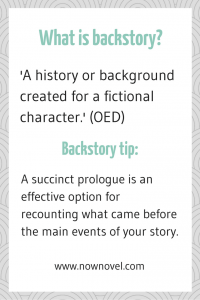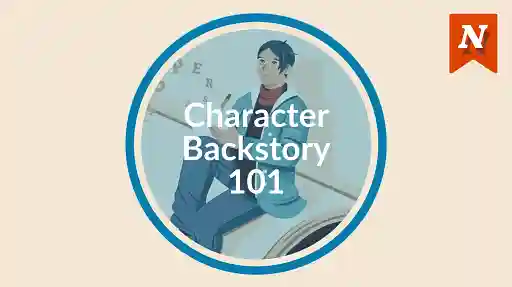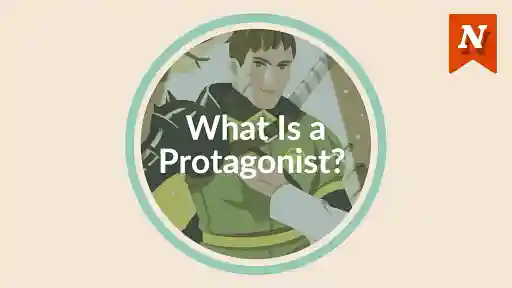Telling character backstory is sometimes necessary to show why your character has a specific motivation or mindset. Yet it's important to learn how to write backstory that will not bog your novel down in constant harking back to prior events that occurred before the present time of your narrative. Read 5 tips for using backstory better:
- Choose what to explain using backstory and what to leave a mystery.
- Only use backstory for characters to explain behavior and plot developments.
- Find how to write backstory without leaving your story's present time.
- Know when to tell backstory and when to show it.
- Use narrative devices such as a prologue or beginning in medias res to get backstory out the way.
Let's unpack each of these points. First, what is backstory exactly?
Defining Backstory

In fiction, backstory refers to the events that precede the narrative frame of the story itself. In a novel that shows bitter rivalry between sisters to ascend a kingdom's throne, for example, the backstory could describe the origins of this strife in their father's favouritism (this is the premise of Shakespeare's King Lear).
The Oxford Dictionary defines backstory simply: it is 'a history or background created for a fictional character'. Because backstory shows cause and effect it makes a story richer and more fascinating. Yet too much hopping back and forth to explain origins can become tiresome.
Choosing what to include as backstory wisely is key:
1. Choose what to explain as backstory and what to leave a mystery
Not every detail about every character's past has to be explained. Using backstory effectively means using it for a purpose. You can use backstory to:
- Explain your characters' psychologies; the origins of their behavior and the forces influencing their decisions
- Increase suspense: Past events that precede and influence your narrative can create expectations of future developments
- Strengthen the reader's emotional connection to your characters - their private histories can foster empathy and understanding
J.K. Rowling uses backstory effectively in her Harry Potter series, as a prime example. Rowling gradually reveals more and more about Harry's late parents. This leads the reader to care and empathise with Harry. The details about his parents that emerge over time create affect and a fuller sense of the enormity of his loss. These details lead readers to invest emotionally in Harry's quest to conquer their killer.
Like Rowling, choose details for backstory that increase affect and investment in story outcomes. It helps to ask questions about your character's past life. If a character has a troubled past with addiction, for example, show the defining event that led them to either spiral down or seek help and get on the path to recovery.
2: Only use backstory for characters to explain behavior and plot developments
E.M. Forster said 'only connect'. This is essential when it comes to writing backstory. Make sure that any incident that occurs before the main narrative events of your story is relevant and illustrative. If your character has quit their job before the story starts, it only makes sense to mention this in passing or devote a flashback scene to this event if it is significant. Does it create a specific fear or motivation that will prove important to your character's choices and development? If not, rather focus on details that do.
For example, if your character meets the romantic partner of their dreams and self-sabotages, the reader wants to know what motivates this behavior.
Sometimes we fill first drafts with backstory because of a lack of story direction. We're simply not sure where we want the story to go. This is why creating a plot outline helps. This is a scenario where backstory could be helpful. You don't need to write a flashback to reveal this information:
3: Find how to write backstory without leaving your story's present time
Your story can get bogged down quickly when you constantly leap back in time to show formative moments for characters. You don't need to tell every bit of backstory using flashbacks. For the example above (a character who self-sabotages at the first sign of potential romance), you can also share backstory in present time narration.
For example, your character might;
- Open up to their love interest in a pivotal scene where they reveal mutual uncertainties or explain troubling preceding actions to each other
- Speak to a close friend about relationship fears, bringing up a past event that explains their hesitance
Sharing backstory via dialogue and conversation is a useful way to avoid too many dizzying flights back and forward in narrative time.
Another way to make sure your backstory isn't too disruptive is to simply tell backstory rather than show it when appropriate:
4. Know when to tell backstory and when to show it

You may have read or been told 'show, don't tell' many times. This advice is useful on one hand. Showing the reader a scene and immersing the reader in your characters' experience makes your fictional world more vivid and real. Yet sometimes, telling is very necessary. It's easier to cover important backstory without having to resort to a flashback if you simply put it in passing narration.
Here's an example:
Frostbitten days like this took her back to the year she turned fifteen, when her mom had been in and out of hospital all winter and snowmen lined the neighbourhood, watching and waiting for something simultaneously inevitable and impossible.
In a single paragraph, you can tell something pivotal and affecting about your character's past that contextualizes their present, without taking your novel out of its current time-frame.
5. Use narrative devices such as a prologue or beginning in medias res
Some backstory explains specific character actions or motivations. Other backstory explains the narrative trajectory of your novel as a whole.
For the latter type of backstory, a succinct prologue is an effective option for recounting what came before the main events of your story. A prologue can give a brief history that will help avoid messy retelling that interrupts the core action of your story.
Alternatively, you can begin your story in medias res (in the middle of the action). Trust that the reader can withstand a little uncertainty as you gradually reveal how your main characters got to this state of affairs.
Are you struggling to create character sketches and backstories? Use the Now Novel idea finder to prompt ideas or share your backstory ideas for feedback from the Now Novel community.
Read more of our top character writing posts via our character writing hub.









How do I show backstory of a minor character who affects the main plot in a big way without info dumping? I editing an outline but so far I don't know where to put it.
Marissa - Over 7 years ago
Hi Marissa - good question. What many historical fiction authors do to show prior events involving secondary characters is to write a prologue scene that shows the specific events or deeds that resulted in said influence on others' trajectories. Otherwise, you could develop scenes involving your main characters making discoveries about your minor character's past. Hopefully you find a solution that makes sense for your story!
Bridget At Now Novel - Over 7 years ago
Nice info, I was hoping for info on backstory when writing a series between book one and bok two. Any ideas? Nathan Rhodes Author "The Mysterious Box from Dark Ridge."
Nathan Rhodes - Over 7 years ago
Hi Nathan, thank you. I'd say read over plot summaries of the first two books in successful series and note down the different ways their authors create continuity regarding individual characters' backstories. It's a useful exercise for finding inspiration. Perhaps there may be subplots in later books in your series that reveal further twists in characters' pasts (I know Rowling did this a lot in the Harry Potter series, creating twists set in the past that made loathed characters seem more humane in the present time of the story, for example). Good luck!
Bridget At Now Novel - Over 7 years ago
Thanks for the tips. They will be useful.
Nathan Rhodes - Over 7 years ago
Thanks, still in school I guess.
Nathan Rhodes - About 7 years ago
Thanks for the information. See I'm working on a fantasy novel and I'm trying to figure out how to introduce the worldbuilding. In some cases I'm told it's better to summarise the world in the prologue (lord fo the rings for example gives a brief history fo the creation of the ring and the battle against sauron). On the other hand, soem say it's betetr to build the world throughout the story as the protagonist journeys across it. What woudl you suggest?
Rob King - Over 7 years ago
Hi Rob, great question! Both approaches have their uses. I wouldn't say either is necessarily better, although prologues are perhaps more 'old-fashioned' (nothing wrong with that either). Prologues do lend an 'epic' sense often (Pratchett exploits this brilliantly for humorous effect in his mock-epic prologues (for example, in his novel 'Nation': 'Imo set out one day to catch some fish, but there was no sea. There was nothing but Imo. So he spat in his hands and rubbed them together and made a ball of sea. After that he made some fish, but they were stupid and lazy.') It's effective to build the world throughout the story if your characters discover it in the course of the story. For example, in the Narnia series we feel the same wonder as the child protagonists as readers, discovering a magical land as the story unfolds. So if there's an element of adventure and discovery, the gradual approach perhaps makes more sense. Good luck!
Bridget At Now Novel - Over 7 years ago
Very interesting. I like that second part about the effectiveness of the readers experiencing and discovering the world through the eyes of the characters. I think I'll apply my world building in that manner. Let the characters share their wonder with the audience. Thank you for the advice.
Rob King - Over 7 years ago
In my story, one characters asks another about why someone leaves. The reasons are woven through history from various ages. So, it's basically an info dump told as a story with questions in between and then them moving to another place. It's broken up a little by a mini-chapter in between. My question is, how much is this frowned upon? I thought it necessary for the character to learn the history of what led up to the events that caused the character to feel he must leave. But between the two chapters this takes place in is seriously 35 pages. It doesn't to me feel too bad because I'm always interested in history and back story... but I really wonder about others so I have my worries. It's a fantasy/sci fi novel.
Joshua Dunn - Almost 7 years ago
Im writing backstory and would like to include dialogue that happened , is that ok ?
John - Almost 2 years ago
Hi John, thank you for your question. Provided that the dialogue in question is relatively succinct I would say so (the difficulty in including a long stretch of conversation in backstory is twofold - for one, the reader may wonder how the viewpoint narrator could remember every detail of a conversation, and secondly it can create an info-dump effect if a large amount of exposition is crammed in). So I would generally aim for concision, or maybe split a longer conversation and its details across several moment of recollection, perhaps. I hope this is useful!
Jordan - Almost 2 years ago